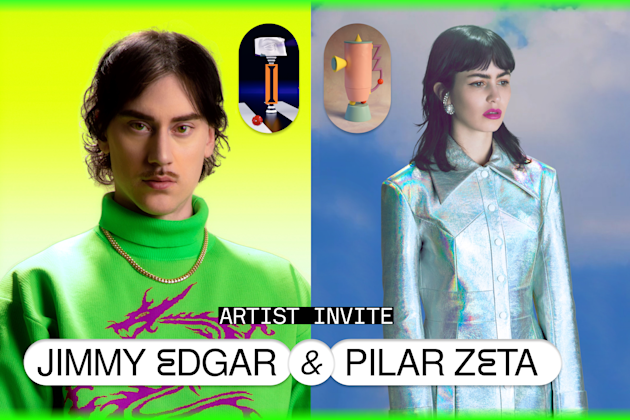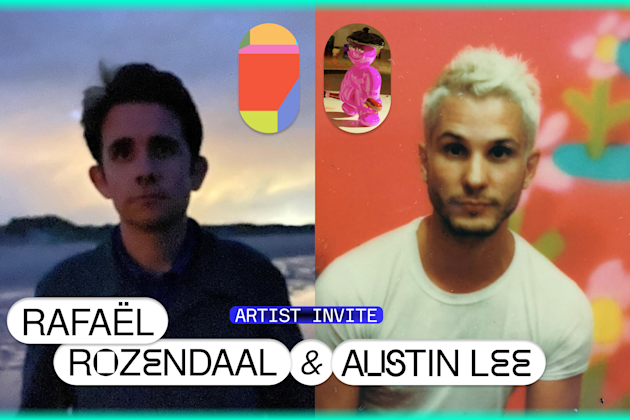Yatreda on the power of storytelling and owning your history.

Yatreda is a family of artists working together to create stunning imagery that captures the history of the kingdoms of Ethiopia. We interviewed Kiya Tadele, the leader of the collective, who has a hand in everything from photography, modeling, casting, and organizing Yatreda’s productions.
Yatreda (ያጥሬዳ) comes from a combination of two Amharic words: fence (አጥር) and debt (ዕዳ). The moniker was Kiya’s nickname growing up—part of a tale that her beauty would cause boys to climb over to their home and break their fence, putting the family in debt. Yatreda also became the name for their art project, simply because they film everything in their front yard in Addis Ababa. Their neighbors started to get curious about the projects they were working on, constantly peeking over the fence to get a look at the family’s creative process—Yatreda all over again.
Storytelling is key to the works created by Yatreda. With NFTs, the family is coming together to tell the story of their history and culture, and ensuring that it is preserved for future generations.
Who are the members of Yatreda and how do you collaborate with one another?
I can say any of my close family is a member of Yatreda because I involve all of them in the journey.
Roman Tadele is my sister. She is a doctor with a passion for painting and writing. She’s good at research and is always arguing online with someone about African history. When someone makes a mistake, she corrects them. So shall we call her our historical advisor?
Another is my little sister, Suzy Tadele. She wants to be a fashion designer and is living in the countryside. She makes costumes for us.
Tigist and Abiy used to work with their hands. Now, they build photo equipment and reflectors.
Our photographer is Joey Lawrence. He is the only foreigner in our group, but he is my fiancé and we live together in Addis Ababa. He has given his heart and soul to this country. Joey has been coming to Ethiopia for 13 years, but you can say I am the one who stole him! Joey has trained so many of us because when he photographs in Ethiopia, he only hires local people and trains them himself. He taught me lighting, directing, and video editing. Now after assisting him, I feel like I can do anything.
How did you first learn about NFTs? What did you think about them?
To be honest, it is embarrassing. For a long time, Joey would talk about bitcoin and I thought he was saying “big coin.” Like a big coin which is very valuable because it is so big. Now we just call it big coin for a joke.
We became obsessed with NFTs when Joey’s photographer friend, Lyle Owerko, told us about them. Lyle photographs a lot here in Africa and has beautiful, respectful, and timeless work. After that, all we would say at our house was, "NFT! NFT! NFT! NFT!" It seemed like something new. Something crazy for an Ethiopian person, because we are more a hand-working kind of people.
In my past as a model, or working on the sets of other photographers or films, I would work very hard, but we would give our work to the internet, or to a client. I had one big question coming and going in my mind: Do I own what I create? I always wanted to do my own thing. With NFTs, I could create my own vision and share it with the world—and most importantly, do something classic that preserved my dignity. It became meaningful, like visiting a museum or art gallery.
What was it like to mint your first NFT, and what advice would you give to others looking to do the same?
Minting my first NFT gave me a lot of different emotions. I wasn’t sure how the NFT community was going to find me. I didn’t want Joey to promote it, because I see it as my own project. How could I feel satisfied if it was only his followers? So I started from nowhere. I wanted to start from the beginning with my own voice, and my own story to tell. I didn’t know what to expect. I was so nervous.
When the first bid came and the auction kept continuing, I was so stressed (even though with every bid, we made more ETH). I know it seems strange, but believe me, I was feeling very scared and shocked. I was thinking, “Oh my god, this is real!”
The next day, reality hit me. It gave me a lot of motivation. The community supported me and helped me. It gave me a lot of energy to come back, and gave me a lot of responsibility not to disappoint my new followers and collectors.
My advice is: do something that is totally you. Try to capture and mint what is already inside you. This is the history I grew up listening to, learning at school, celebrating every year. I am a child of Ethiopian patriots, and this is what I was born to create.
Why was it important to create your first series of NFTs about the kingdoms of Ethiopia?
This idea came to me when I watched the movie Gandhi. I said, “I wish we had this kind of quality movie about Ethiopia. I wish a big production company came here and did this kind of job!” You see, we have a lot of ancient history, and heroes as big as Gandhi, but our movies are limited. Why shall I ask someone to do it and not do it myself? I wanted to preserve these important African legends forever.
One of your NFTs was collected by HerstoryDAO. Are you familiar with the work they are doing? What is it like to know that one of your Queen of Sheba NFTs is now part of their collection?
You know, a DAO is kind of like what Ethiopians call a “Ekube.” This is where dear friends or family members pool money together each month into a single bank account to save money. Otherwise, we might slowly spend it and waste it. Each year, one member gets the total Ekube for themselves, all the money, to buy or invest in something big. So HerstoryDAO reminded me of how I saved with friends to buy my car. It’s my car, but in some way we are all part owners and we benefit from doing something together that we can’t do on our own.
I’m so thankful and honored to have the Queen of Sheba in HerstoryDAO’s collection. The Queen of Sheba is one of the most famous African Queens in our legends and she should be known to everyone.
What are your hopes for how NFTs can continue to empower artists in Ethiopia?
I am happy to be one of the first from my country. In this space as an African Habesha woman I can be a motivation for other people. I have to say that for the most part, in Ethiopia we do not always value artwork, or even value copyright, or verifying who made what first.
One beautiful and motivating princess we all know around the world is Princess Diana from England. But what about Itegue Taitu, or Yodit? I feel like I can teach everyone about these equally inspiring figures. I can make both outsiders and my people aware of Ethiopia through beautiful digital art. I can tell my future daughter she doesn’t have to worship an already well-known foreign person. Everything is already here, in our history.
Read more

Artist Invite: Jimmy Edgar & Pilar Zeta

Artist Invite: Rafaël Rozendaal & Austin Lee
